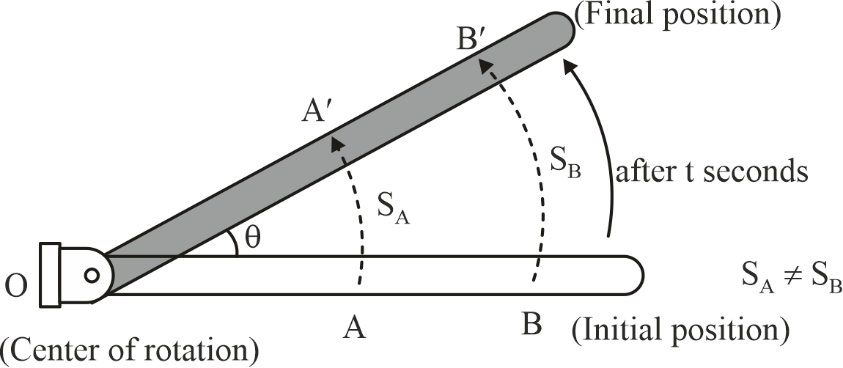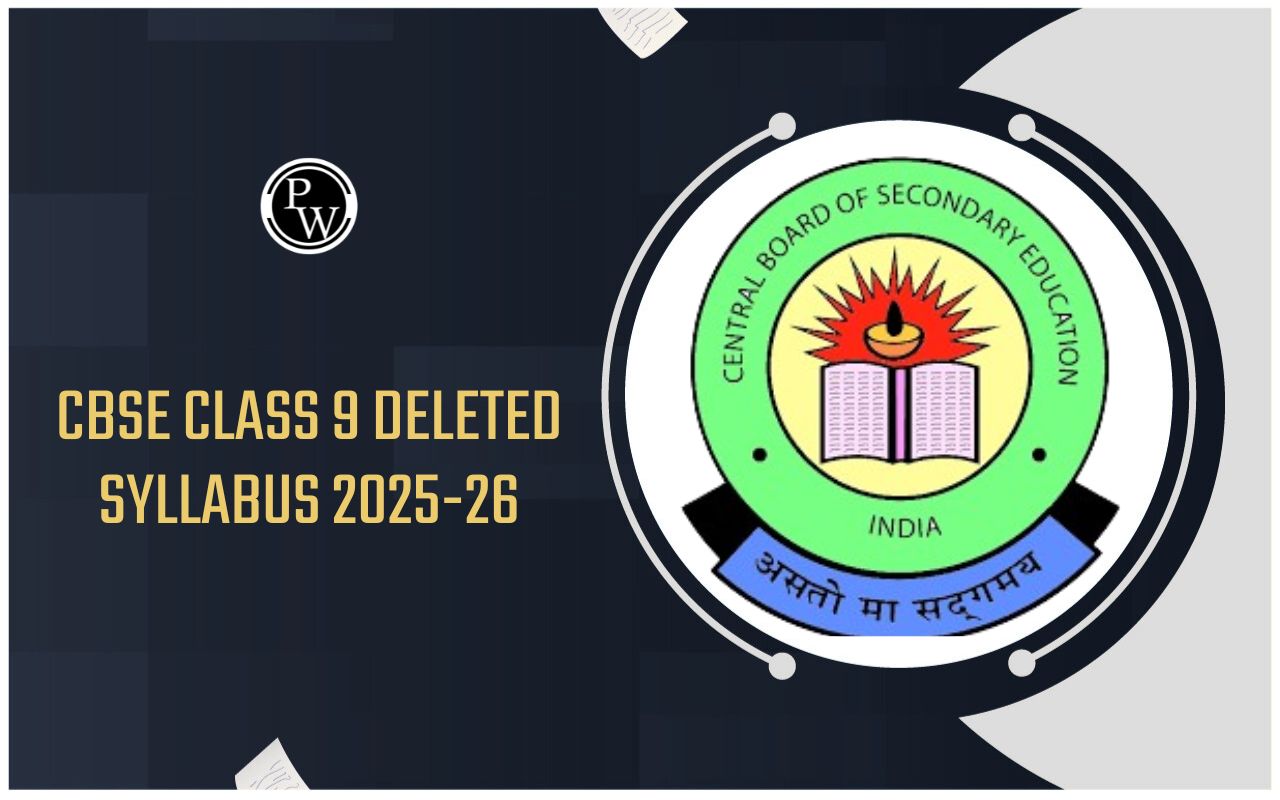
Definition And Formula Of Rotational motion
Rotational Motion Formula An item rotates or spins around a fixed point or axis in rotational motion, sometimes referred to as angular motion. Rotational motion involves movement around a central axis, as opposed to translational motion, which involves an item moving directly from one location to another.What is Motion?
Motion is the term used to describe how an object's position with respect to a reference point changes over time. It is a fundamental idea in physics and is applied to numerous ways of describing the motion of bodies and things.Types of Motion
Various characteristics, including an object's path, speed, and direction of motion, can be used to categorise motion into different categories. The main types of motion are as follows:- Rotational Motion: Rotational motion, also known as angular motion, involves the spinning or rotating movement of an object around a fixed axis. All points of the object move in circular paths around the axis of rotation.
- Circular Motion: A rotational motion known as circular motion involves an object rotating in a circle around a central point. It can be uniform circular motion (constant speed along the circular path) or non-uniform circular motion (changing speed along the circular path).
- Oscillatory Motion: Oscillatory motion is repetitive back-and-forth movement around an equilibrium position. It is characterised by periodic motion, where an object moves between two points in opposite directions.
Also Check - Simple Harmonic Motion Formula
What is Rotational Motion?
An item rotates or spins around a fixed point or axis in rotational motion, sometimes referred to as angular motion. Rotational motion involves movement around a central axis, as opposed to translational motion, which involves an item moving directly from one location to another. In rotational motion, all points of the object move in circular paths around the axis of rotation. The rotational motion can be either clockwise or counterclockwise, depending on the direction of the angular displacement.Also Check - Thermodynamics Formula
Formulas of Rotatory Motion
Rotational motion involves several important formulas that help describe and analyse the behaviour of rotating objects. Here are some of the key rotational motion formulas:- Angular Displacement ( ):
- Angular Velocity ( ):
- Tangential Velocity ( v ):
Download PDF Rotational Formula
- Angular Acceleration ( a ):
- Centripetal Acceleration ( ac ):
- Moment of Inertia (I):
- Torque (τ):
- Angular Momentum (L):
- Rotational Kinetic Energy ( K rot ):
Also Check - Work, Energy & Power Formula


Properties of Rotational Motion
Rotatory motion possesses several properties that are important to understand when studying this type of motion. Some of the key properties of rotatory motion include:- Axis of Rotation: The rotation axis is a fixed point or line that all points on a spinning object follow in circular motions. The axis can be internal or external to the object, depending on the type of motion.
- Tangential Velocity: At any given point on the rotating object, the tangential velocity is the instantaneous linear velocity tangent to the circular path. It represents the speed at which that specific point is moving along its circular trajectory.
- Angular Displacement: Angular displacement measures the change in the angle of an object as it rotates from one position to another. It is usually represented by the symbol θ and is measured in radians or degrees.
- Angular Velocity: Angular velocity is defined as the rate at which an angular displacement changes over time. It represents how fast an object is rotating and is denoted by the symbol ω. Angular velocity is a vector quantity and points along the axis of rotation.
- Angular Acceleration: Angular acceleration is a unit of measurement for the rate of change in angular velocity with respect to time. It indicates how quickly the rotational speed of the object is changing and is represented by the symbol α.
- Moment of Inertia: The moment of inertia (also known as rotational inertia) quantifies an object's resistance to changes in its rotational motion. It is determined by the object's mass distribution as well as the axis of rotation.
- Torque: Force's rotational counterpart is torque. It results in a shift in angular momentum, which creates rotational motion. The product of the force applied and the perpendicular distance from the axis of rotation to the site of application of the force determines the torque operating on an item.
- Conservation of Angular Momentum: Like linear momentum, angular momentum is conserved in an isolated system when no external torques act upon it. This conservation principle plays a crucial role in understanding many rotational phenomena.
- Centripetal Force: In circular motion, there is a centripetal force acting towards the center of the circular path, responsible for keeping the object in that trajectory. For rotational motion, this force is essential for maintaining the circular path of each point on the object.
- Gyroscopic Stability: Gyroscopic stability is a unique property of rotating objects, like gyroscopes. It allows them to maintain their orientation and resist changes in their rotational axis, even when external forces act upon them.
- Rotational Kinetic Energy: The kinetic energy associated with an object's rotation is known as rotational kinetic energy. It is determined by the moment of inertia and angular velocity of the object.
Rotational Motion Formula FAQs
What is rotatory motion?
Rotatory motion, also known as rotational motion, is a type of motion in which an object rotates or spins around a fixed point or axis.
What are the key properties of rotatory motion?
The key properties of rotatory motion include the axis of rotation, angular displacement, angular velocity, angular acceleration, moment of inertia, torque, conservation of angular momentum, and gyroscopic stability.
How is rotatory motion different from translational motion?
Translational motion involves movement from one position to another in a straight line, whereas rotatory motion involves circular movement around a fixed point or axis.
What are some examples of rotatory motion in daily life?
Examples of rotatory motion in daily life include the rotation of wheels on vehicles, the spinning of a top, the movement of a ceiling fan, and the rotation of Earth around its axis.
Talk to a counsellorHave doubts? Our support team will be happy to assist you!

Check out these Related Articles
Free Learning Resources
PW Books
Notes (Class 10-12)
PW Study Materials
Notes (Class 6-9)
Ncert Solutions
Govt Exams
Class 6th to 12th Online Courses
Govt Job Exams Courses
UPSC Coaching
Defence Exam Coaching
Gate Exam Coaching
Other Exams
Know about Physics Wallah
Physics Wallah is an Indian edtech platform that provides accessible & comprehensive learning experiences to students from Class 6th to postgraduate level. We also provide extensive NCERT solutions, sample paper, NEET, JEE Mains, BITSAT previous year papers & more such resources to students. Physics Wallah also caters to over 3.5 million registered students and over 78 lakh+ Youtube subscribers with 4.8 rating on its app.
We Stand Out because
We provide students with intensive courses with India’s qualified & experienced faculties & mentors. PW strives to make the learning experience comprehensive and accessible for students of all sections of society. We believe in empowering every single student who couldn't dream of a good career in engineering and medical field earlier.
Our Key Focus Areas
Physics Wallah's main focus is to make the learning experience as economical as possible for all students. With our affordable courses like Lakshya, Udaan and Arjuna and many others, we have been able to provide a platform for lakhs of aspirants. From providing Chemistry, Maths, Physics formula to giving e-books of eminent authors like RD Sharma, RS Aggarwal and Lakhmir Singh, PW focuses on every single student's need for preparation.
What Makes Us Different
Physics Wallah strives to develop a comprehensive pedagogical structure for students, where they get a state-of-the-art learning experience with study material and resources. Apart from catering students preparing for JEE Mains and NEET, PW also provides study material for each state board like Uttar Pradesh, Bihar, and others
Copyright © 2025 Physicswallah Limited All rights reserved.
Get App










